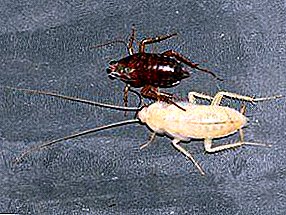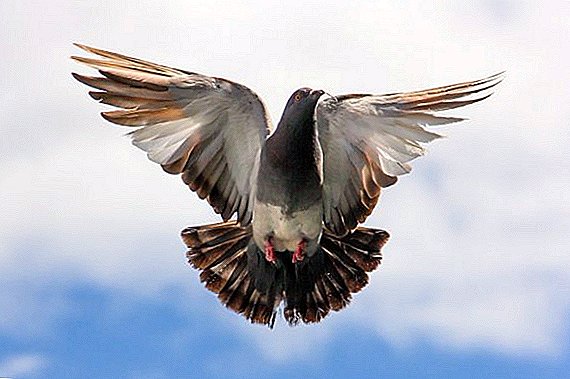
Meeting with an albino cockroach always causes a person a shock and makes him look for the cause of his appearance.
So many myths about this insect were created.
Consider where the white cockroaches in the apartment come from, what it is and how they are dangerous to humans.
White cockroaches - who is it?
The hypotheses disproved by scientists:
- White insects are mutated under the action of high doses of radiation insects emitting gamma rays. They are indeed capable of acquiring mutations, but this will require a powerful radioactive source that cannot be encountered in a human home.
- They are representatives of albinos - the rarest individuals that are inbornly non-pigmented. If this were true, then the probability of meeting them would be negligible.
- Albino is not a cockroach at all, but new insect unknown to science. Agree, it is naive to believe that a representative of the new species was able to escape from the taxonomists who are developing new taxonomic units.
- The lack of pigment in a white cockroach is the consequence of a way of life in secluded dark places. The theory was criticized due to the fact that the relationship between exposure to light and the intensity of the color of a cockroach was not found.
 In fact, an albino is a nymph who has just dropped a small chitinous scale, and not a new kind of cockroach.
In fact, an albino is a nymph who has just dropped a small chitinous scale, and not a new kind of cockroach.
White individuals are less common than others for two reasons:
- chitinous cover is colorless for a short time: after 4-6 hours the pigment gives it a light brown color;
- insects are vulnerable during shedding, so they hide in secluded places where they will not be caught off guard.
As a result of molting in the larva under the old shell, a young, unpainted chitinous cover is formed. Pigmentoobrazovanie contributes to its hardening and begins several hours after dropping the flakes.
The last molt transforms the nymph into an adult, which in the first hours of life is also devoid of color. Soon the pigment accumulates, and the insect takes on its usual appearance.
A photo
Consider a photo of white cockroaches and make sure that these are not some mutants or a new type of insect:



Differences from the rest
Insect inherent in all the qualities of a domestic cockroach. Neither remarkable survival, nor gluttony, nor danger to people, they became famous. In contrast, in the “colorless” period of life, the insect is most vulnerable due to the fragility of the recently formed protective shell.
Albinos, like other individuals, live next to a person, but due to their vulnerability they choose secluded places:
- slots under the bathroom, furniture;
- defects in the walls, between baseboards;
- basements.
More often than an adult individual there is a white nymph, mistaken for a new type of insect and frightening with an unusual color and the absence of wings in it.
What harm do they bring?
 They are carriers gastrointestinal infections.
They are carriers gastrointestinal infections.
The whole body of the insect is covered with small fibers that perform the function of a tactile organ. Tens of thousands of pathogenic bacteria, fungi, protozoa and helminth eggs are able to settle on the villi.
The average domestic cockroach is a carrier:
- dysenteric amoeba;
- salmonella;
- pathogenic cocci;
- Koch sticks;
- meningococci;
- ascaris;
- pinworms
Visiting refuse chutes and sewers (especially black cockroaches), he collects on his surface pathogens of enteritis, colitis, acute intestinal infections, meningitis, which enter the human body after swallowing a piece of food with which the insect came in contact.
Treat strong allergens
Prusaks along with the hair of domestic animals and plant pollen are powerful allergens.
Enough contact with dust particles that come in contact with the allergen in order to develop:
- any type of immediate allergic reaction (contact dermatitis, conjunctivitis, urticaria, allergic rhinitis);
- acute asthma and debut in children.
Can a person bite?
 It is believed that the cockroach is able to bite a sleeping person. Theoretically possible due to the structure of the insect's mouth apparatus, but such bites happen rarely.
It is believed that the cockroach is able to bite a sleeping person. Theoretically possible due to the structure of the insect's mouth apparatus, but such bites happen rarely.
Myths away
If you met an unusual white cockroach at home - do not get lost. There is no albino cockroach, the photo above confirms this. But in any case, now you have to get rid of baleen. There are several ways to do this:
- popular methods, for example, home-made poison based on boric acid;
- chemical means, for example, powders and dusts, crayons and pencils, traps, gels, aerosols;
- call professionals who will process the cold or hot fog method.












